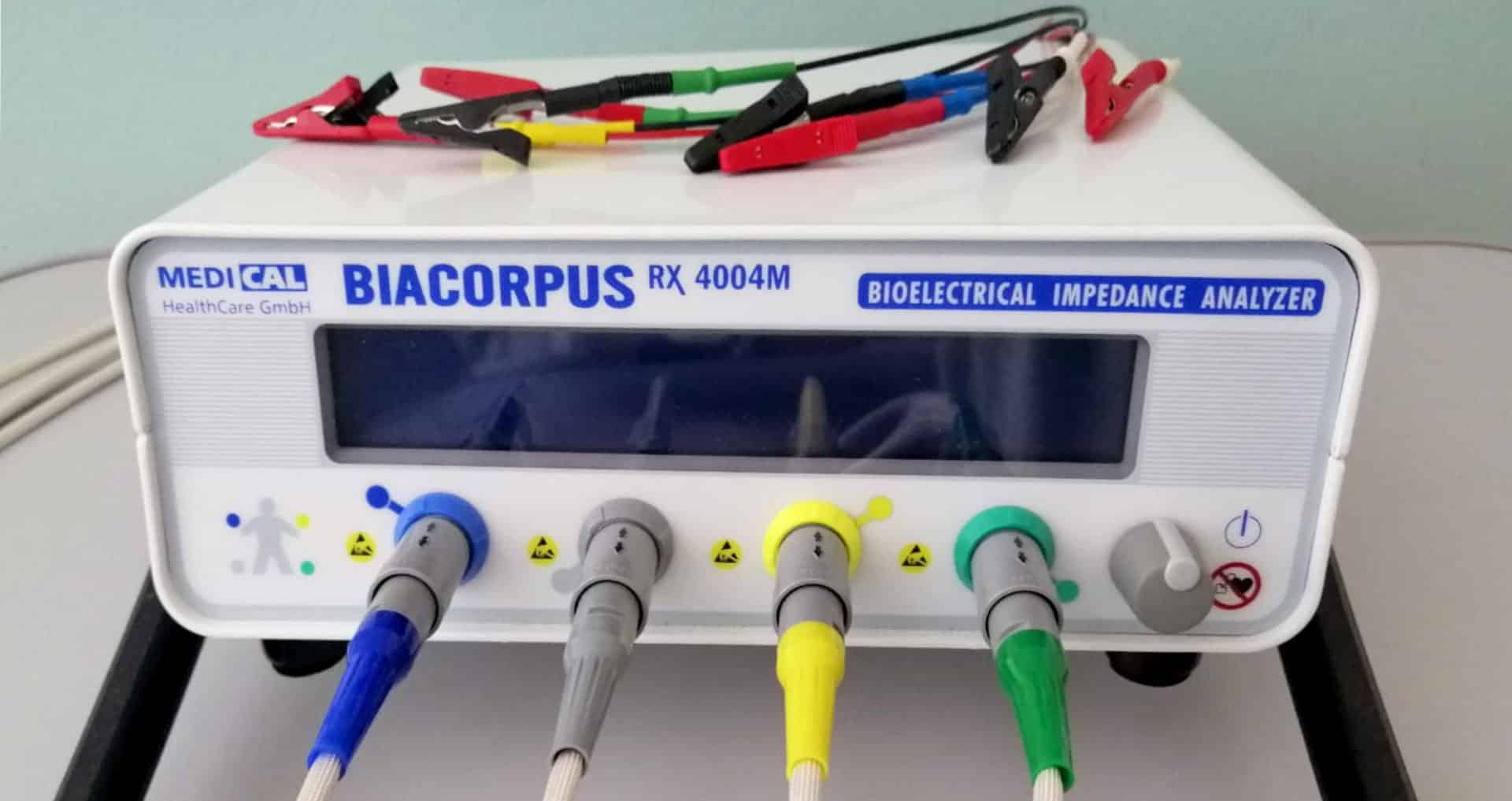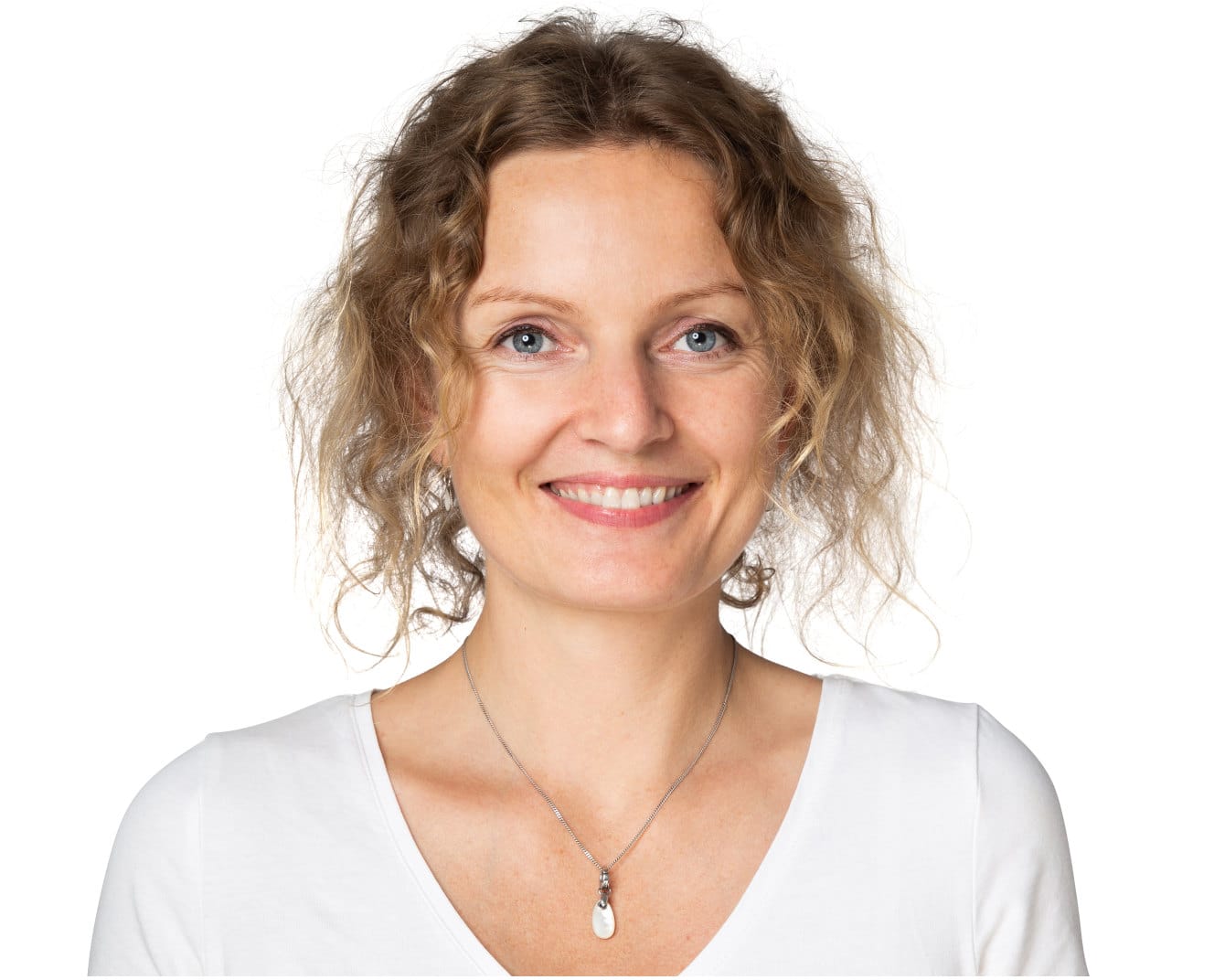BIA measurement of body composition

The BIA measurement is a whole-body analysis to measure body composition
BIA measurement: an indispensable tool in nutritional counseling
The BIA measurement (bioelectrical impedance analysis) provides important information about your metabolism and tells you what the scales don’t tell you. Scales measure the whole person, so you never know whether your weight has decreased or increased because you have flushed out water or perhaps stored it, whether you have gained or lost active cell mass or whether you have lost or gained fat. In this respect, the BIA measurement is an indispensable tool in nutritional advice.
The BIA measurement is a whole-body analysis to measure body composition. Among other things, it measures how much fat, water and active cell mass (muscles and weight of all organs) is present. The nutritional status of the cells is also described. It is an electrical resistance measurement on the human body. An electrical alternating current field is generated by two skin electrodes on the right hand and two on the right foot.
Bioelectrical impedance analysis:
the analyzed body compartments
- Total body water (TBW)
- Fat free mass (FFM)
- Lean body mass (LBM)
- Fat mass (FM)
- Body cell mass (BCM)
- Extracellular mass (ECM)
The BIA measurement reveals what the scales don’t tell you
The resistance (impedance, Z) of the body is measured with the constant signal of this alternating current of 0.8 mA at a frequency of 50 kHz. An electromagnetic field is built up in the body via two external electrodes. The voltage drop and the phase shift of the signal voltage are measured via two further electrodes inside this field (four-wire measurement). The positioning of the electrodes on this “inner measuring path” must be precisely observed for a valid and repeatable BIA measurement.
The partial resistances of the AC resistance are R resistance and Xc reactance. Induction has no significance for the BIA. The resistances depend on the length and volume of the body and the composition of different conductive tissues and organs of the body. As electrolytes, the intracellular and extracellular body fluids primarily define the resistance R. The cell membranes show capacitor effects, which can be explained by the structure and charges of the double-layer membranes and determine the Xc component.
The BIA uses one measurement to measure two values that reveal different biological characteristics:
- R: the effective resistance R analyzes the body fluid status
- Xc: the sum of all membrane capacities Xc gives an indication of the quantity, body cell mass BCM and quality of the body cells.
With only slight fluctuations, 74 % of the fat-free mass (FFM) consists of water. A direct physiological connection can therefore be made between the resistance and the conductive compartments. Adipose tissue is an insulator and therefore conducts poorly or has a high effective resistance (R). Healthy cell systems with their intact cell membranes generate a high capacitive resistance Xc. High Xc values indicate an intact energetic state of the cells, i.e. a good nutritional state.
Malnutrition and illness show characteristic deficits that are typically reflected in the ratio of the two resistances to each other. This value is called the phase angle (pA). The higher the proportion of Xc in the total resistance Z, the greater the phase angle. Healthy, well-nourished, athletic and well-muscled bodies are characterized by a large phase angle. Diseases and malnutrition, as well as physical inactivity, reduce the phase angle.
Changes in the body fluids in the distribution rooms can also be measured. For example, the fluctuations in body fluid content over the course of a day can be measured very accurately by the change in conductivity. The formulas have been developed from studies with comparatively analyzed reference methods.
Procedure of a BIA measurement
If you want to take a BIA measurement, your last meal should not have been less than two hours ago and you should also have finished a sports session at least two hours beforehand. Before the BIA measurement, the current weight is determined and the waist and hip circumference are measured. The BIA measurement is taken with the patient lying down. Two electrodes are attached between the bones of the wrists and ankles on the same side of the body. Before the BIA measurement values can be considered valid, the subject must lie horizontally for at least 5 minutes or longer in order to achieve an even distribution of body fluids.
“The gods have placed the diagnosis before every therapy, but every diagnosis remains gossip as long as it does not help therapeutically”
– old medical wisdom –
Your contact persons
Contact and appointment possible at any time
Do one or more of the above points apply to you and would you like to do something for your health? Are you curious? Please contact us by telephone to arrange an appointment.
You can reach us during our opening hours by calling 030 79016533. We look forward to your call or message.











